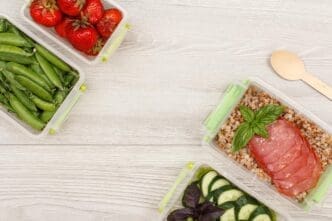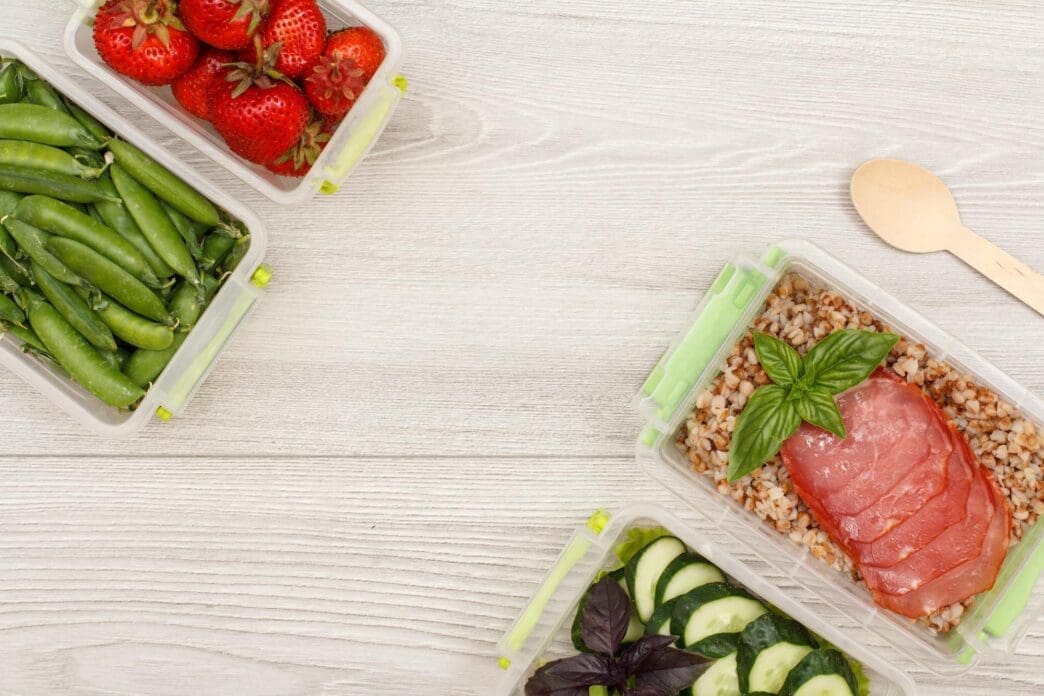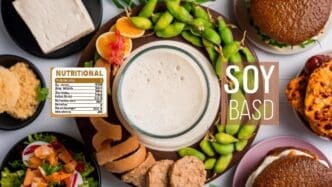A Quick Takeaway
The Story Behind the Trend
How to Make It Work for You
The Community View
Meal prepping is a strategic culinary practice where individuals prepare entire meals or components of meals in advance, typically for the week ahead, to streamline healthy eating habits, save time and money, and reduce daily decision fatigue. This accessible method empowers anyone looking to take control of their nutrition, ensuring wholesome, balanced meals are readily available whether at home, work, or on the go. By simplifying the journey toward a more consistent and mindful dietary lifestyle, meal prep becomes an indispensable tool for achieving long-term health goals.
Why Embrace Meal Prep? The Core Benefits
Adopting meal preparation into your routine offers a multitude of advantages that extend beyond just having food ready. It fundamentally shifts your approach to eating, making healthy choices the default rather than an effortful decision.
Time Efficiency
One of the most compelling reasons to meal prep is the significant time savings throughout your week. Dedicating a few hours on a specific day, like Sunday, eliminates the daily scramble of cooking, freeing up evenings for other activities or relaxation.
Imagine coming home after a long day to a ready-to-heat dinner; this efficiency reduces stress and makes sticking to healthy habits much easier.
Financial Savings
Eating out frequently or relying on convenience foods can quickly drain your wallet. Meal prepping allows you to buy ingredients in bulk, take advantage of sales, and reduce food waste, leading to substantial savings over time.
By planning your meals, you only purchase what you need, avoiding impulse buys and expensive last-minute food purchases.
Nutritional Control
When you prepare your own meals, you have complete control over the ingredients, portion sizes, and cooking methods. This enables you to reduce unhealthy fats, added sugars, and excessive sodium often found in processed foods and restaurant dishes.
It’s a powerful way to ensure your diet is rich in whole foods, lean proteins, complex carbohydrates, and essential micronutrients, directly supporting your health and wellness goals.
Stress Reduction
The daily decision of “what’s for dinner?” can be surprisingly stressful. Meal prepping removes this mental burden, providing a clear plan for your week’s eating.
Knowing your meals are handled brings a sense of calm and organization, allowing you to focus your energy elsewhere.
Your Beginner’s Blueprint: How to Get Started
Embarking on your meal prep journey doesn’t have to be overwhelming. Follow these simple steps to build a sustainable and enjoyable routine.
Step 1: Plan Your Meals
Start by choosing 2-3 recipes you genuinely enjoy and that lend themselves well to batch cooking. Consider meals that can be easily portioned, like grain bowls, stir-fries, or sheet pan dinners.
Factor in your schedule, dietary preferences, and any specific nutritional goals you might have. A consistent plan helps minimize decision fatigue later.
Step 2: Grocery Shop Smart
Once your meals are planned, create a detailed grocery list. Organize it by supermarket sections to make your shopping trip efficient and prevent forgotten items.
Stick to your list to avoid impulse purchases and ensure you have all the necessary ingredients for your prep session.
Step 3: Master Your Prep Session
Designate a specific block of time, typically 2-3 hours, for your meal prep. Start with tasks that take the longest, such as roasting vegetables or cooking grains, and then move to chopping and assembling.
Multi-tasking is key; while one item cooks, you can be chopping ingredients for another, maximizing your time.
Step 4: Proper Storage is Key
Invest in good quality, airtight containers, preferably glass, to keep your food fresh and prevent leaks. Labeling containers with the meal and date can also be helpful for organization.
Proper storage not only extends the shelf life of your prepped food but also makes grabbing a meal quick and convenient.
Essential Tools for Meal Prep Success
While you don’t need a professional kitchen, a few key items can significantly enhance your meal prep experience.
High-Quality Containers
A set of durable, leak-proof, microwave-safe containers is non-negotiable. Glass containers are often preferred for their longevity, ease of cleaning, and ability to go from fridge to microwave or oven.
Having uniform sizes can also help with stacking and organization in your refrigerator.
Kitchen Gadgets
Tools like a sharp chef’s knife, a large cutting board, a food processor, and an immersion blender can drastically cut down on prep time. Slow cookers and instant pots are also excellent for hands-off cooking of proteins and grains.
These investments pay off by making the entire process smoother and more enjoyable.
Tips for Sustainable Meal Prepping
To ensure meal prepping remains a beneficial part of your routine, consider these practical tips.
Prioritize Food Safety
Always follow safe food handling practices: wash your hands, keep raw and cooked foods separate, and cool hot foods quickly before refrigerating. Perishable foods should not be left at room temperature for more than two hours.
Most prepped meals are safe to consume within 3-4 days when stored properly in the refrigerator.
Embrace Variety
To prevent meal fatigue, rotate your recipes weekly or create “component prep” where you cook individual ingredients (e.g., roasted chicken, quinoa, steamed broccoli) that can be mixed and matched into different meals.
Adding different seasonings or sauces can also transform the same base ingredients into varied dishes.
Start Small and Scale Up
Don’t try to prep every single meal for the entire week right away. Begin by preparing lunches for a few days or dinners for half the week.
As you gain confidence and efficiency, you can gradually increase the scope of your meal prep.
Overcoming Common Meal Prep Challenges
Even seasoned meal preppers face hurdles; knowing how to navigate them can keep you on track.
Battling Boredom
If you find yourself getting tired of the same meals, explore new recipes, experiment with different cuisines, or try batch cooking individual components that offer more flexibility in assembly.
Incorporating a “flex meal” or two that isn’t prepped can also break up monotony.
Time Constraints
If a dedicated prep session feels too long, break it into smaller chunks throughout the week. For example, chop vegetables on one evening and cook proteins the next.
Utilize pre-cut vegetables or pre-cooked grains from the grocery store to save time on busy weeks.
Ingredient Spoilage
To prevent food from going bad, ensure proper storage and consider freezing some portions if you’re prepping for more than 3-4 days. Choose ingredients that hold up well, like sturdy greens and root vegetables.
Planning meals that use similar ingredients can also help reduce waste by ensuring everything gets used.
Your Path to Effortless Healthy Eating
Meal prep is more than just cooking in advance; it’s an empowering strategy that transforms your relationship with food, saves valuable time and money, and consistently supports your health goals. By following a structured approach, utilizing the right tools, and embracing flexibility, you can master the art of meal preparation. This blueprint provides the foundation for a sustainable, healthy lifestyle where nutritious meals are always within reach, making well-being an effortless part of your daily routine.








